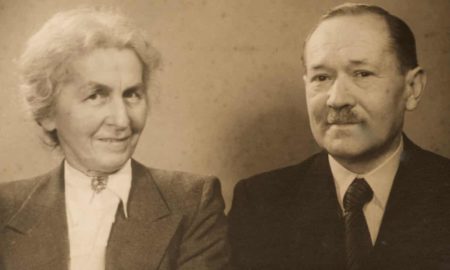At about 6:00 a.m. on 14 June 1940, the German army marched into Paris. Two hours later, Wehrmacht headquarters were established in the Hôtel de Crillon on the Place de la Concorde. At 9:45 a.m., the Nazi swastika flag was hanging over the tomb of the unknown soldier from the center of the Arc de Triomphe. Eight hours later, officers and soldiers had taken over the buildings where they would live, work, and relax for the next four years. It was clear that before they arrived, senior officers knew exactly which buildings were going to be appropriated for the German occupation forces.
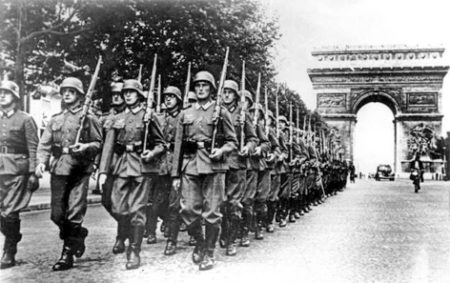
One of the most opulent and upscale Paris neighborhoods was centered along avenue Foch in the 16th arrondissiment. (During the Belle Epoque period, the street was named avenue Bois.) Mansions owned by French millionaires, industrialists, celebrities, and bankers lined the grand avenue. That is, until 14 June when the Gestapo began to take over the mansions. Over time, the French came to refer the street as “Avenue Boche.” (Boche was a derogatory term used to describe the German occupiers.)
Did You Know?
Did you know that the last surviving member of an elite French commando unit passed away on 3 July 2023?
Léon Gautier (1922−2023) was a soldier in the 1er bataillon de fusiliers marins commandos, or commonly known as the “Kieffer Commandos” aptly named for its commander, Philipp Kieffer (1899−1962). There were 177 Kieffer commandos who landed on Sword Beach early on the morning of 6 June 1944. Their initial target was a heavily fortified bunker but standing between them and the bunker was a wide-open beach. After hitting the sand, it took the men four hours of heavy fighting, cutting through barbed wire, and withstanding a hailstorm of bullets, to take their objective. The men spent seventy-eight straight days in combat and half of them were killed. Only two dozen men escaped death or injury ⏤ Léon Gautier was among the lucky ones.
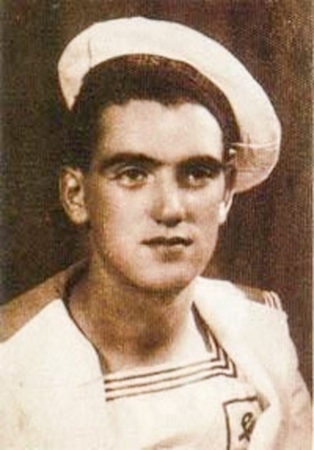
The fighting unit exists today as part of the Naval Commandos of the French navy. The green beret and bronze shield badge are worn proudly seventy-nine years after the unit received its official designation in March 1944.
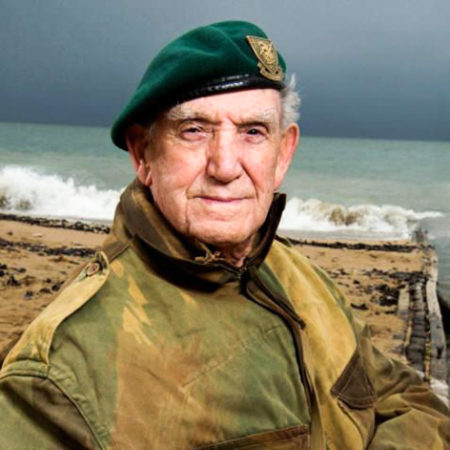
M.Gautier’s great-great-grandson was born on 6 June 2017, the 73rd anniversary of D-Day.
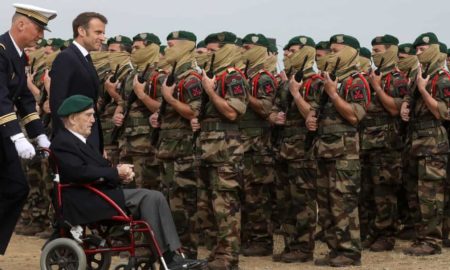
The American Hospital of Paris
As it became apparent the Germans would enter Paris unopposed, Dr. Thierry de Martel (1876−1940), chief surgeon at the American Hospital told his friend and U.S. ambassador to France, William Bullitt (click here to read the blog, The American Mayor of Paris) that he would never leave the city. Dr. de Martel was antisemitic and anti-German. His son died in the first world war and the father had an intense hatred for Germans. He could not bear to think about swastika flags flying from buildings in his beloved city. He saw only one option available to him. On the morning of 14 June, Dr. de Martel sat down on his living room couch and injected himself with a lethal dose of strychnine.
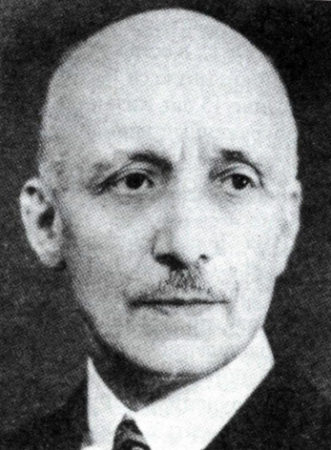
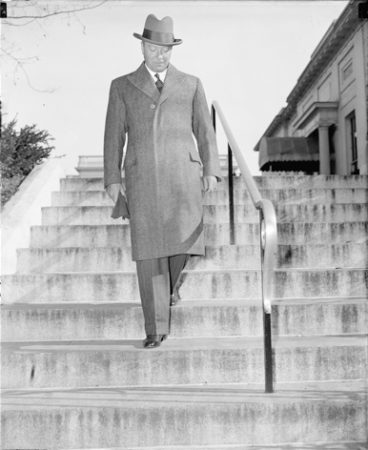
The American Hospital was founded in 1906 in the Paris suburb of Neuilly-sur-Seine and it is the only civilian hospital in Europe that does not receive government subsidies from France or the United States. It is a nonprofit organization and relies solely on donations. The hospital was inaugurated with 24-beds and today its capacity is 187 beds. Within five years, the hospital became one of the primary care centers for the wounded men in World War I reaching a capacity of 2,000 beds at its peak. In 1914, the American Hospital’s famous motor-ambulance corps was established (click here to read the blog, The Rochambelles). Notable patients of the hospital over the decades include Gertrude Stein (died), Rock Hudson (treated for AIDs), Ernest Hemingway (head wound and removal of his appendix), Aristotle Onassis (died), Sara Delano Roosevelt (treated for pneumonia), and the actor, Bette Davis (died).
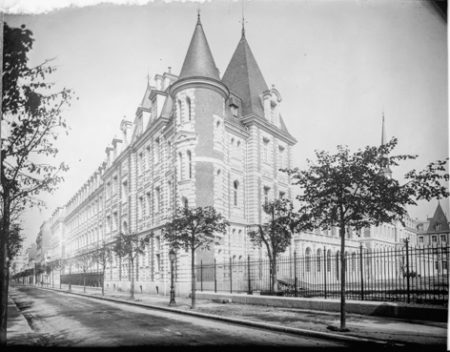
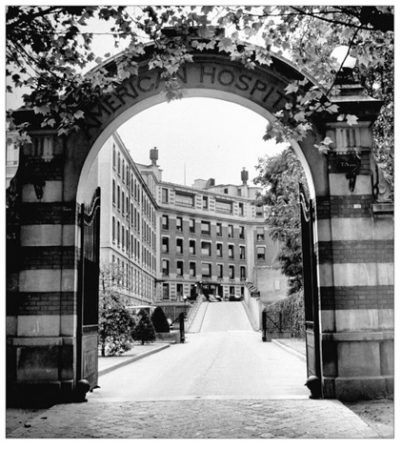
After Dr. de Martel committed suicide, Dr. Sumner W. Jackson replaced him as the hospital’s chief surgeon (and leader). The Germans allowed the hospital to treat wounded Allied POWs as it saved them an immense cost. Dr. Edmond Gros suffered an emotional and physical breakdown and resigned his position on the hospital’s board of governors. He was replaced by Aldebert de Chambrun (1872−1962), who became a collaborationist with the Germans during their four years of occupation.
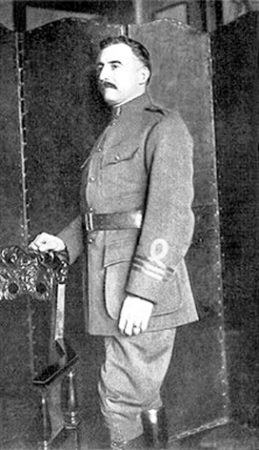
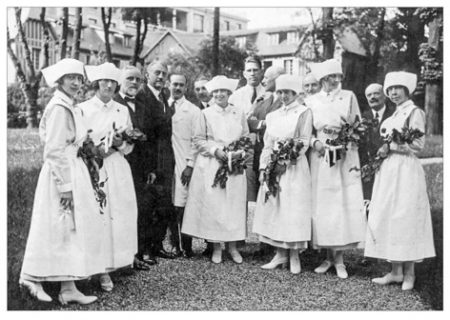
After the German occupation of Paris and France, Dr. Jackson used his position to begin undercover resistance activities to shelter, provide false documents, and move Allied soldiers across the border to Spain. It worked well until four years later when the Gestapo caught up with Dr. Jackson, his wife, and their teenage son.
Let’s Meet the Jackson Family
Sumner Jackson (1884−1945) was a Jefferson Medical College graduate in 1914 and became a battlefield surgeon in France during World War I. He met a Swiss-born nurse, Charlotte (“Toquette”) Sylvie Barrelet de Ricout (1888−1968), during this time and they were married in 1917. Returning to the United States, the couple did not seem to fit in, and by 1921, they had returned to Paris. Sumner began as a staff surgeon with the American Hospital and during the interwar years, he gained a steadfast professional and personal reputation eventually becoming Dr. de Martel’s assistant. During that time, Dr. Jackson treated American expats such as Gertrude Stein, Zelda Fitzgerald, Ernest Hemingway, and e.e. cummings. A contemporary report to the hospital’s governors stated, “Too much praise cannot be given to Dr. Sumner Jackson.”
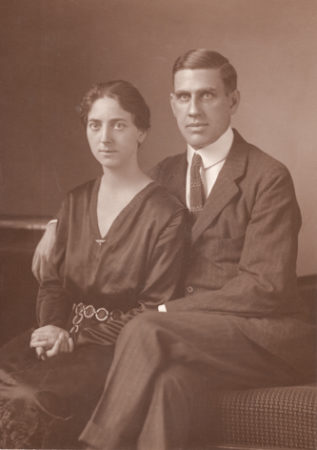
In January 1928, Toquette gave birth to the couple’s only child, a son named Phillip (1928−2016) and he went by “Pete” for the remainder of his life. Pete adored his parents and the three of them lived comfortably on the ground floor of their residence at 11, av. Foch.
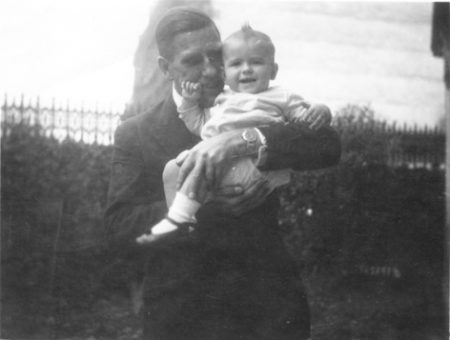
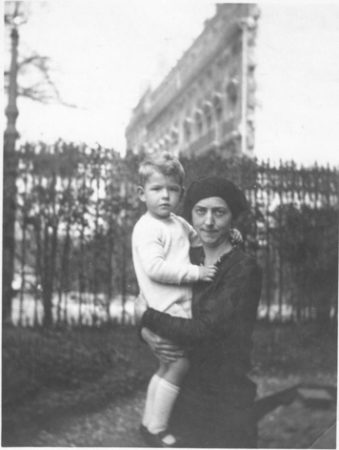
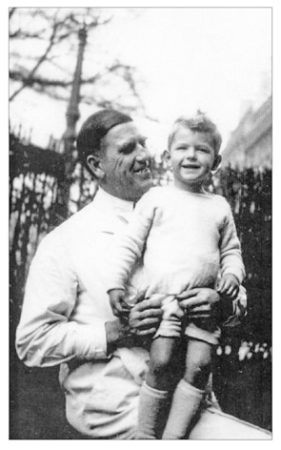
Avenue Boche
Following on the heels of the Wehrmacht entering Paris was a small Sonderkommando unit of Gestapo men. Handpicked by SS-Obergruppenführer Reinhard Heydrich, the unit’s commander was thirty-year-old SS-Standartenführer Helmut Knochen (1910−2003). Knochen, the head of the Paris Gestapo, settled into his offices located at 72, av. Foch. His superiors, SS-Sturmbannführer Karl Bömelburg (1885−1946) and SS-Brigadeführer Karl Oberg (1897−1965) had offices at 84, av. Foch and nearby at 57, bd Lannes (Waffen-SS headquarters), respectively. The head of Sicherheitsdienst-SD counterintelligence, SS-Sturmbannführer Hans Josef Kieffer (1900−1947), worked out of 84, av. Foch. Reporting to Adolf Eichmann, SS-Hauptsturmführer Theodor Dannecker (1913−1945), head of the Bureau of Jewish Affairs, had his offices at 31 bis, av. Foch. The buildings at 80-84, av. Foch contained Gestapo offices used for imprisonment and torture. The KriPo, or Nazi police responsible for criminal investigations were housed at 74, av. Foch. The Paris Gestapo Amt III (intelligence operations) was headquartered at 58-60, av. Foch. Around the corner and within a short walking distance were the rue Pergolèse residences of Hugo Bleicher (1899−1982), the Nazis’ premier spy catcher and his next-door neighbor, the French traitor, Henri Déricourt (1909−1962).
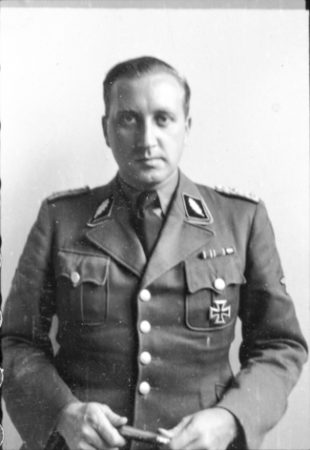
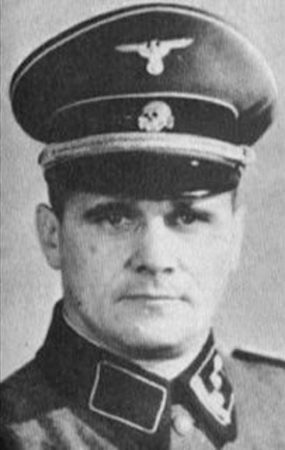

Dr. Jackson and his family were surrounded by the most dangerous Nazis in Paris. It was a web of killers, double agents, collaborationists, and informers. Due to his position, protection from de Chambrun, and luck, the Jacksons almost managed to pull off their resistance activities for the entire four years of occupation without any interference from the Gestapo. However, in May 1944, their luck ran out.

Resistance Activities
Pete hated the German occupiers and like many other teenagers, he carried chalk with him to scribble “V” on walls in recognition of the Allied victory sign. (That is until his parents found out.)
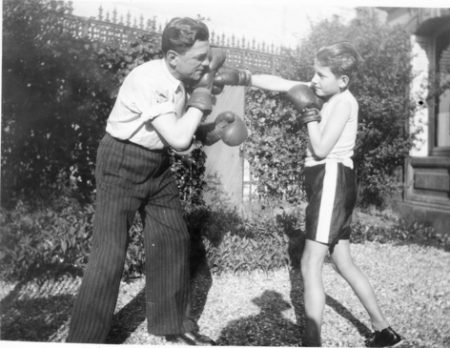
Dr. Jackson had been aiding Allied agents and downed airmen since the occupation. However, by the spring of 1943, Toquette was approached by representatives of the Goélette-Frégate resistance network and asked the Jacksons to provide their home as a drop-off site for important intelligence material. It would put the Jackson family at great risk, but they finally agreed to the arrangement. They allowed Goélette agents to meet at the apartment but refused to allow radio transmissions as that would be an unnecessary risk. Despite their efforts to shield Pete, he eventually became involved in the family’s resistance activities including foolishly taking photos of the U-boat pens at Saint-Nazaire and the Atlantic Wall coastal defenses. (German soldiers were under orders to immediately execute any non-German caught taking photographs.)
By the fall of 1943, the Jackson’s “letter box” became an integral part of Goélette’s operations. Besides the normal maps and photographs, extremely important information passed through the avenue Foch residence including the first designs of Germany’s new V-1 rocket.
The Jacksons were no different than any other Parisian family in early 1944. They suffered from a lack of food and clothing. However, there was another gruesome fact. By mid-1943 and into 1944, Knochen and Keiffer had built up a sizeable network of spies, collaborationists, and informers. French résistants were being denounced, French and British resistance networks and circuits (e.g., British-led Special Operations Executive) were infiltrated, and scores of resistance agents were arrested, tortured, and deported/murdered under Hitler’s directive, Nacht und Nebel (click here to read the blog, Night and Fog).
Goélette knew the Germans were tightening the noose around the organization and Toquette was warned. On 24 May 1944, Goélette and its agents, including Toquette (nom de guerre: Colombiers), were betrayed to the Germans.
Arrest, Deportation, and Concentration Camps
The Gestapo sent three members of the Milice (a Vichy collaborationist paramilitary organization) to the Jackson residence where Toquette and Pete were arrested. Almost simultaneously, the Gestapo arrested Dr. Jackson at the hospital.
The Milice interrogated each family member but never tortured them. On 7 June, they were turned over to the Gestapo for further questioning. As the Allies broke out of the Normandy beaches, Dr. Jackson and Pete were loaded into a bus destined for the Compiègne detention camp and from there, in mid-July, they were deported to KZ Neuengamme in northern Germany. Toquette was sent to the Romainville detention center and a month later, put on the last train out of Paris (click here to read the blog, The Last Train Out of Paris) with KZ Ravensbrück as her final destination.
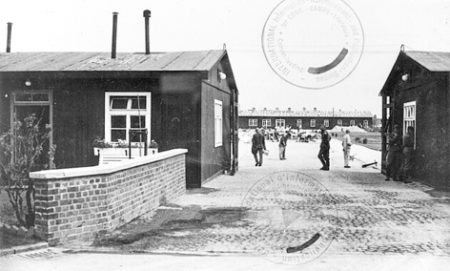
The Jacksons survived the winter of 1944/45 in the camps through sheer strength of willpower, courage, and determination. They all worked at hard labor. Dr. Jackson toiled as a machinist in a munitions factory (where he lost a finger) while Pete was assigned to clear bomb damage. Fortunately, Dr. Jackson found a replacement for his son and Pete was able instead to get a job in the camp kitchen, likely saving his life. Toquette’s life at KZ Ravensbrück was brutal. Starvation, lack of medical care, illness, and horrible working conditions contributed to Toquette’s physical deterioration. Worse than all of that, Toquette never knew what happened to her husband and son.
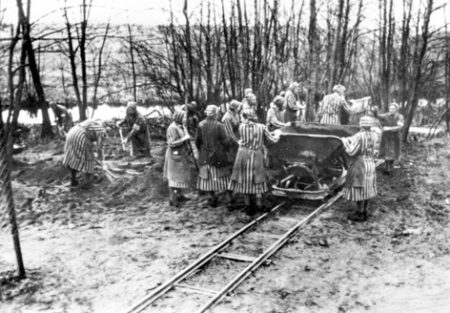
SS Thielbek and the White Buses
As the war neared its end, Heinrich Himmler gave the orders that all evidence of Nazi crimes was to be eliminated. This meant concentration camp prisoners were to be murdered so they couldn’t testify against their captors. However, Himmler was looking for ways to save his skin and he agreed to release some of the women prisoners (click here to read , The White Buses and here to read Ten Gifts of the White Bus Rescue). Under the White Bus project, Toquette was released and on 28 April 1945, she landed at Malmö, Sweden. Toquette’s physical condition was such that she was barely alive and had she not been released, it likely Toquette would have perished in the camp before its liberation. Of the 550 women deported with her from Paris on 15 August 1944, Toquette was one of only seventeen survivors.
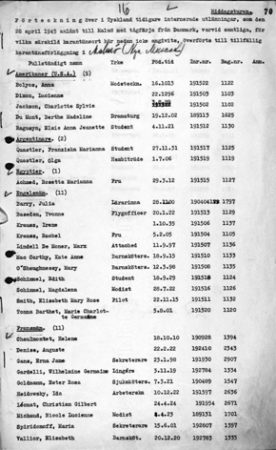
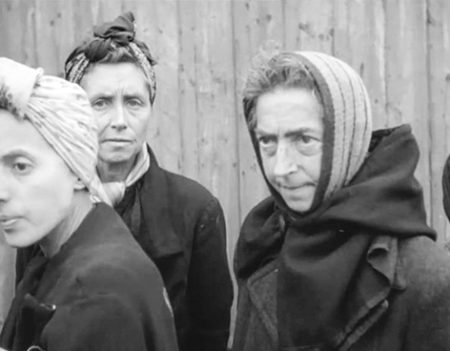
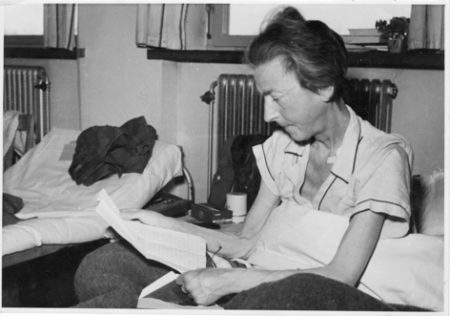
There were nine thousand inmates at KZ Neuengamme. By April 1945, the British were advancing toward the camp and six thousand men (including Dr. Jackson and Pete) were shipped to Lübeck where on 3 May, they boarded the cargo carrier, SS Thielbek. (Two passenger ships, Cap Arcona and the Deutschland, were also used.) The remaining three thousand prisoners at KZ Neuengamme were murdered by the camp guards.

Under Himmler’s orders, the Nazis planned to scuttle the three ships with all inmates on board. However, the British did not know the ships carried the prisoners and on the afternoon of 3 May, RAF fighters attacked. Pete was on deck when the Thielbek took a direct hit. He looked for his father and not seeing him, Pete jumped into the water. Reaching a lifeboat, Pete climbed in but was thrown back into the sea once the German sailors realized he was a prisoner. He swam to shore with two hundred other men. The first 150 ashore were mowed down by SS machine guns. Pete and the other fifty men swam away and came ashore further down the beach where they were taken by the SS to Neustadt along with 200 other survivors from the sinking ships. Lined up to be shot, Pete and the others heard the sound of British tanks and their would-be executioners fled. The arrival of British troops saved the lives of fifty survivors of the sinking of the Thielbek. Pete was one of them.
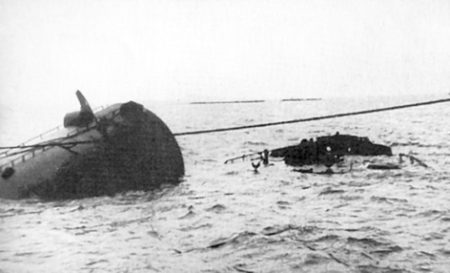
An eyewitness told Pete that his father was seen in the water clinging to a plank but was clearly having “difficulties.” Dr. Jackson’s body was never recovered.
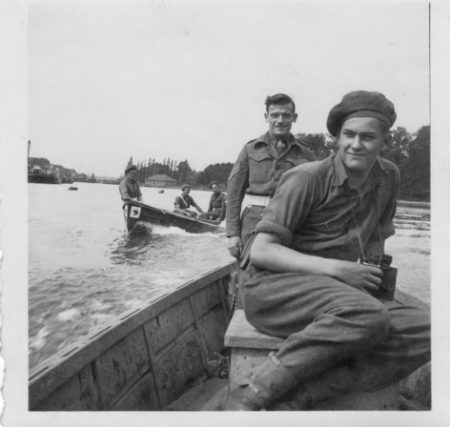
Post War
Pete enlisted in the British army and ultimately returned to Paris where he was reunited with his mother in September 1945. The apartment on avenue Foch was just as they left it more than a year and a half earlier.
At the age of seventeen, Pete returned to Germany in 1946 to testify against fourteen men who had run the Neuengamme concentration camp. Every defendant Pete testified against was found guilty and hanged.
Pete Jackson remained in Paris, awarded the French Legion of Honor as well as the Croix de Guerre, and after a serious accident in the late 1990s, lived out his life at L’Hôpital des Invalides. Pete strove his entire life to encourage improvement of Franco-German relations.
Toquette passed away in 1968 at the American Hospital of Paris.
The Jackson Award
In 2013, the board of governors of the American Hospital of Paris created the Jackson Award to commemorate the services of Dr. and Mrs. Jackson to the hospital before and during World War II. The first recipients of the Jackson medal were Sumner and Toquette and Pete accepted the award on their behalf.
I’m grateful to have developed a dialogue with Pete’s daughter, Loraine and I thank her for providing some of the images used in this blog. The Jackson’s avenue Foch apartment will be one of the featured stops in volume two of Where Did They Put the Gestapo Headquarters?
Next Blog: “The British Kardashian Sisters”
Correspondence and Commentary Policy
We welcome everyone to contact us either directly or through the individual blogs. Sandy and I review every piece of correspondence before it is approved to be published on the blog site. Our policy is to accept and publish comments that do not project hate, political, religious stances, or an attempt to solicit business (yeah, believe it or not, we do get that kind of stuff). Like many bloggers, we receive quite a bit of what is considered “Spam.” Those e-mails are immediately rejected without discussion.
Our blogs are written to inform our readers about history. We want to ensure discussions are kept within the boundary of historical facts and context without personal bias or prejudice.
We average about one e-mail every two days from our readers. We appreciate all communication because in many cases, it has led to friendships around the world.
★ Read and Learn More About Today’s Topic ★
Bleicher, Hugo. Colonel Henri’s Story. London: William Kimber and Co. Limited, 1954.
Brouwer, Marilyn. The Fascinating Story of the American Hospital of Paris. Bonjour Paris, 3 May 2021. Click here to read the article.
Brownell, Will and Richard N. Billings. So Close to Greatness: A Biography of William C. Bullitt. New York: Macmillan Publishing Company, 1987.
Delarue, Jacques. The Gestapo: A History of Horror. Barnsley: Frontline Books, 2008. (Originally published by Libraire Arthème Fayard, 1962.)
Etkind, Alexander. Roads Not Taken: An Intellectual Biography of William C. Bullitt. Pittsburgh: University of Pittsburgh Press, 2017.
Glass, Charles. Americans in Paris: Life & Death Under Nazi Occupation. New York: Penguin Books, 2010.
Glass, Charles. American Hospital of Paris: Brave Volunteers & Heroes of the Resistance. Click here to read the article.
Helm, Sarah. A Life in Secrets: Vera Atkins and the Missing Agents of WWII. New York: Anchor Books, 2007.
Kershaw, Alex. Avenue of Spies: A True Story of Terror, Espionage, and One American Family’s Heroic Resistance in Nazi-Occupied Paris. New York: Broadway Books, 2015.
Lagard, Dorothée. Américan Hospital of Paris 1906−2006: L’aventured’un siècle. Paris: Cherche Midi, 2006. (French edition)
Vaughan, Hal. Doctor to the Resistance: The Heroic True Story of an American Surgeon and His Family in Occupied Paris. Dulles, VA: Potomac Books, Inc., 2004.
Vega, Ricardo and Richard Lerchbaum (producers). Doctor Jackson’s File (Le dossier du Docteur Jackson). Lunaticas Productions, 2015.
Disclaimer:
There may be a chance that after we publish this particular blog, the video links associated with the blog are no longer accessible. We have no control over this. Many times, whoever posts the video has done so without the consent of the video’s owner. In some cases, it is likely that the content is deemed unsuitable by YouTube. We apologize if you have tried to access the link and you don’t get the expected results. Same goes for internet links.
What’s New With Sandy and Stew?
Sandy and I attended my 50th high school reunion in late July. We traveled to Akron, Ohio for what was a three-hour gathering of people I didn’t recognize but my memory was somewhat refreshed by their name tags. In many cases, I didn’t remember the person even with the help of a name badge. Unfortunately, the high school senior yearbook photos were not included on the badges and that little detail might have helped. Kudos to the committee of five people organizing the reunion. Other than the missing nametag pictures and the loud music (didn’t they know we’re old and can’t hear?), they did a wonderful job of planning, communicating, and executing the affair. I can’t wait for the 100th reunion.
By the way, did you know that a new movie starring Anthony Hopkins will have a screening at this year’s BFI London Film Festival? “One Life” is the story of Sir Nicholas Winton and his efforts to save children from the Nazis (click here to read the blog, Kindertransport and Mr. Winton).
Thank you to all of you who subscribe to our bi-weekly blogs. It seems there isn’t a day that goes by where we don’t increase our readership. Please let your history buff friends and family members know about our blog site and blogs.
Someone Is Commenting On Our Blogs
It is always a pleasure to hear from Nicole C. She always has so many personal stories and memories regarding our blog topics. This time she commented on our blog, Mulberry Harbor & The Delta Works (click here to read).
Nicole remembers as a ten-year-old in a French school hearing about the 1953 Great Flood. The students were asked to knit a square of wool to make blankets. Nicole says that is how she learned to knit. They also sent toys to the Dutch children affected by the disaster.
Nicole, I’ll keep the blogs coming if you promise to keep sending us your stories and memories.
If there is a topic you’d like to see a blog written about, please don’t hesitate to contact me. I love hearing from you so keep those comments coming.
Do you enjoy reading? Do you have a hard time finding the right book in the genre you enjoy? Well, Ben at Shepherd.com has come up with an amazing way to find that book.
Shepherd highlights an author (like me) and one of their books. The author is required to review five books in the same genre. So, if a reader is interested say in cooking, they can drill down and find specific books about cooking that have been reviewed by authors in that category. Very simple.
If you like to read, I highly recommend you visit Shepherd.com. If you do, please let me know what you think and I will forward Ben any suggestions or comments you might have.
Click here to visit Shepherd’s website.
Click the books to visit Stew’s bookshelf.
Check out Stew’s new bookshelf on the French Revolution.
Share This:
Follow Stew:
Find Stew’s books on Amazon and Apple Books.
Please contact Stew directly for purchase of books, Kindle available on Amazon. Stew.ross@Yooperpublications.com or Contact Stew on the Home Page.
Please note that we do not and will not take compensation from individuals or companies mentioned or promoted in the blogs.
 Walks Through History
Walks Through History
Copyright © 2023 Stew Ross









